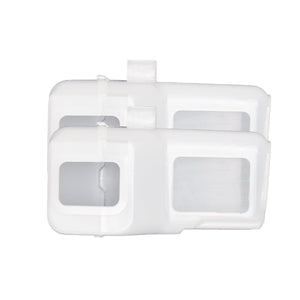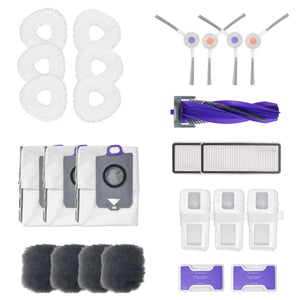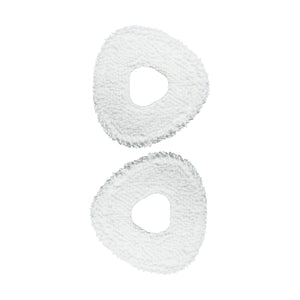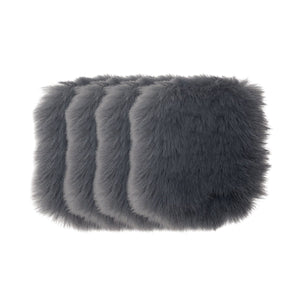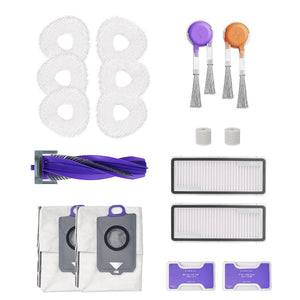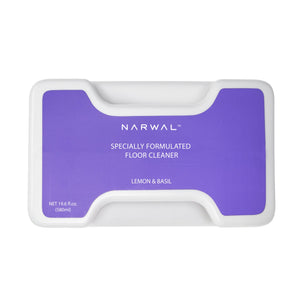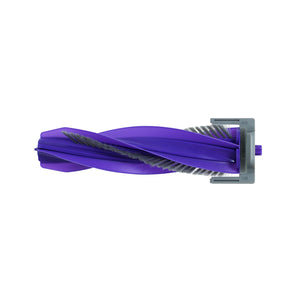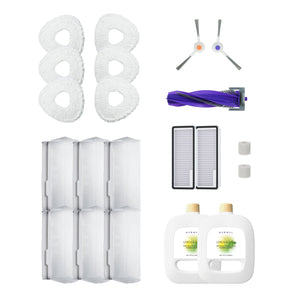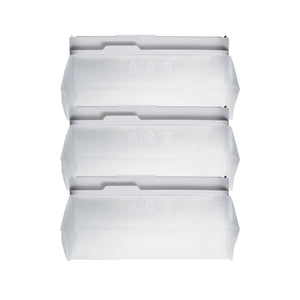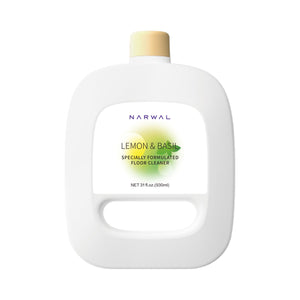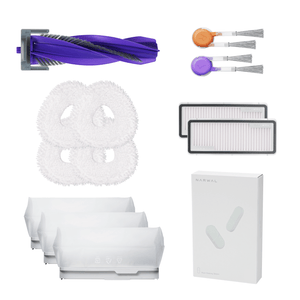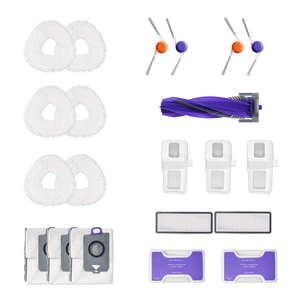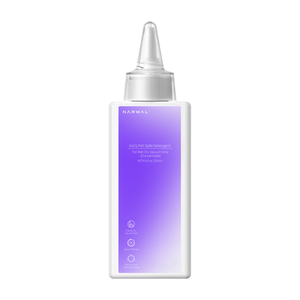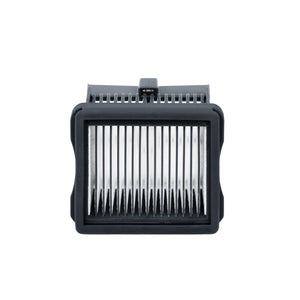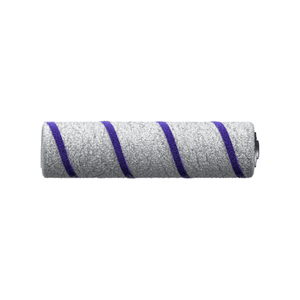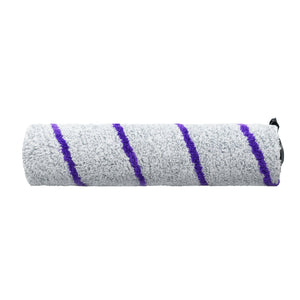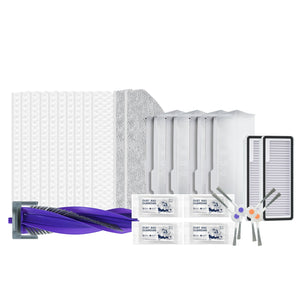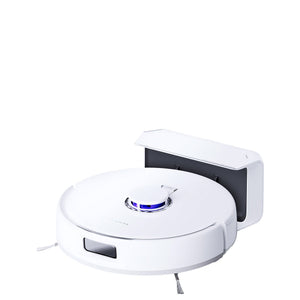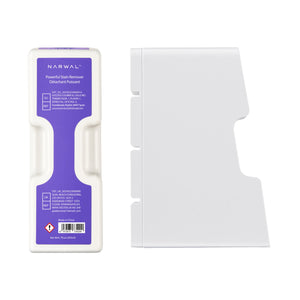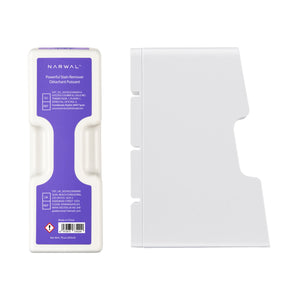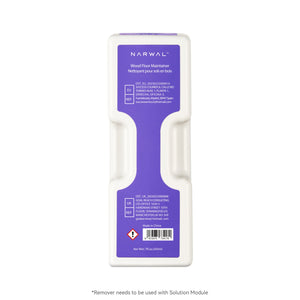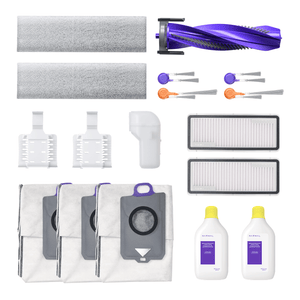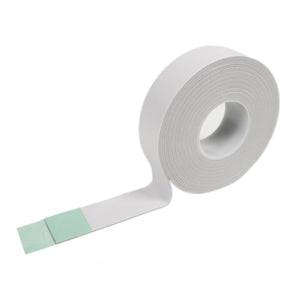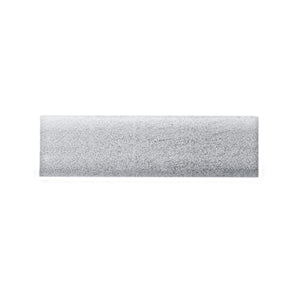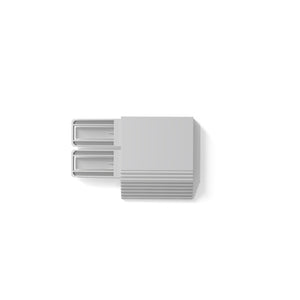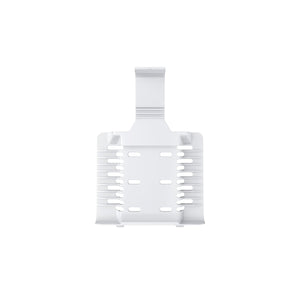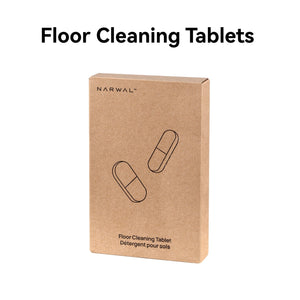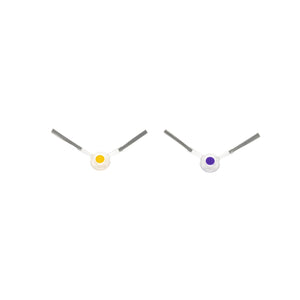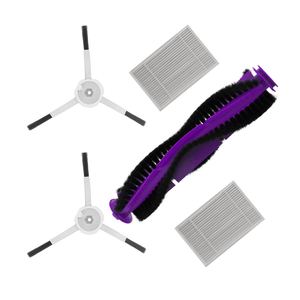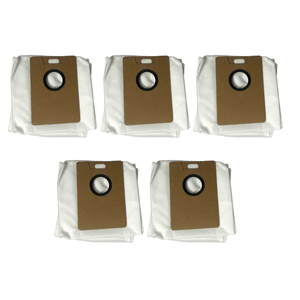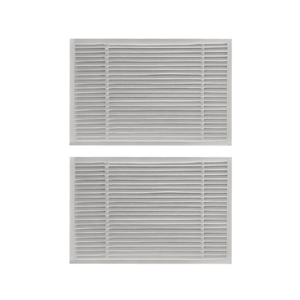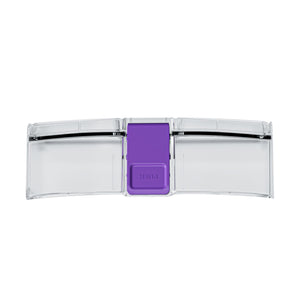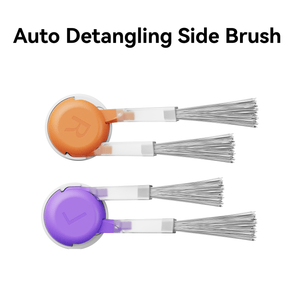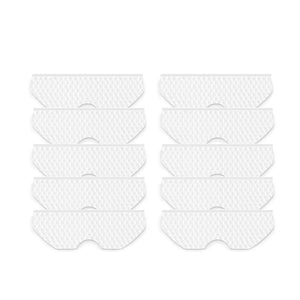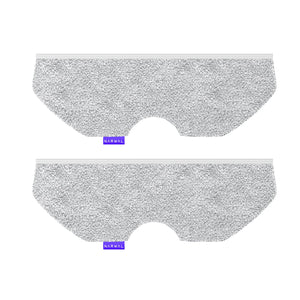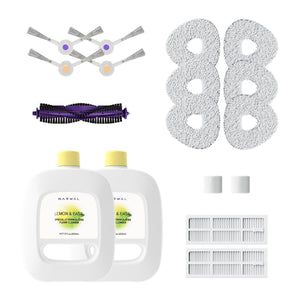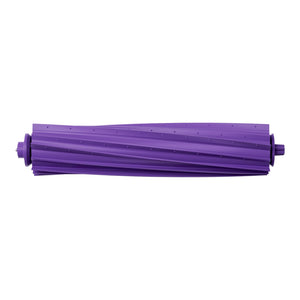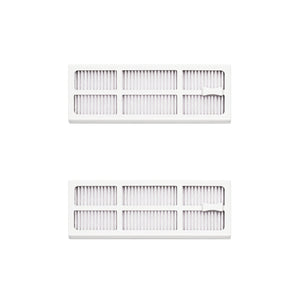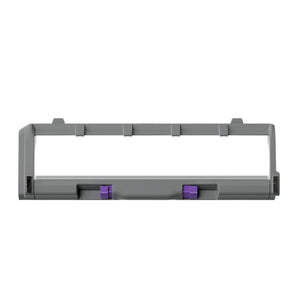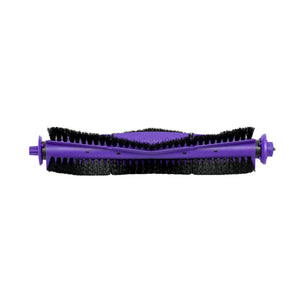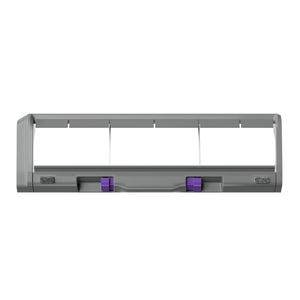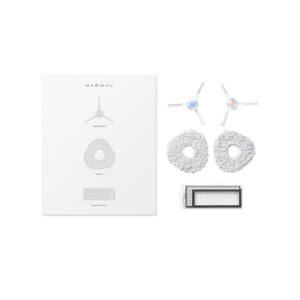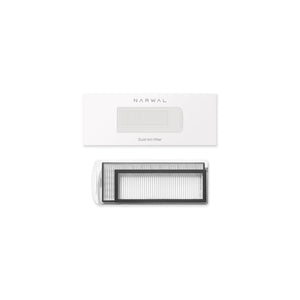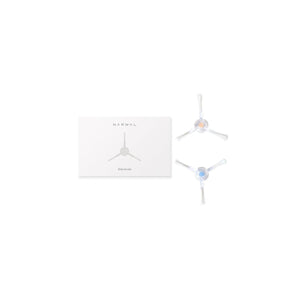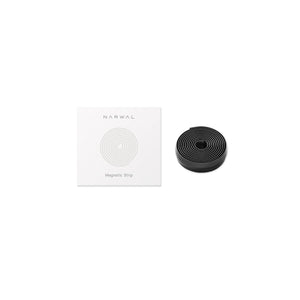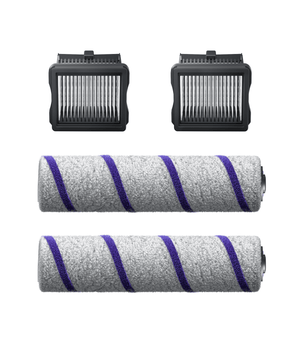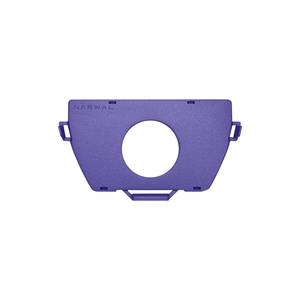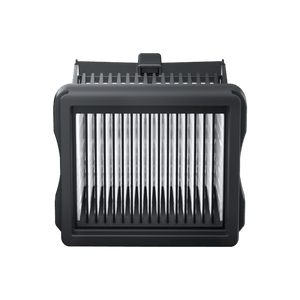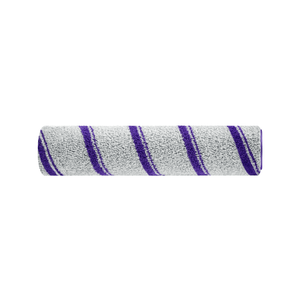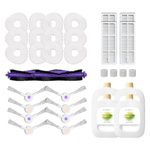Not all “high suction” robot vacuums clean equally well. Many users struggle with poor carpet pickup or leftover pet hair—often due to misunderstanding what suction power really means.
This guide explains how robot vacuum suction power works, what Pa ratings like 2,000 or 22,000 truly reflect, and how airflow, brush design, and sealing affect performance. You’ll learn how to choose the right suction level by floor type, compare top models like Narwal Flow and Freo Z Ultra, and keep your vacuum cleaning at full strength.
What Is Pa in Robot Vacuum Suction Power?
Pa, short for Pascal, is the unit used to measure suction pressure in robot vacuums. It tells you how much force the vacuum can exert to pull in dust and debris.
-
Higher Pa = stronger suction.
For example: -
Entry-level robot vacuums: 2,000–2,500 Pa — suitable for light daily cleaning on hard floors.
-
Mid-range models: 4,000–6,000 Pa — ideal for households with pets, carpets, and mixed flooring.
-
Premium models: 10,000+ Pa — built for deep cleaning and handling heavy debris.
So, when comparing robot vacuum suction power, the Pa rating gives you a quick snapshot of the vacuum’s performance potential.
For a deeper understanding, it’s helpful to know how manufacturers measure vacuum suction, including units like Air Watts (AW), Water Lift, and how airflow affects cleaning efficiency.
Average Robot Vacuum Suction Ranges: What’s Normal?
When selecting a vacuum, one of the most important factors is suction power. This is often measured in Pascals (Pa), Air Watts (AW), or Watts (W), depending on the vacuum type. The suction power varies significantly across different vacuum models, so it's essential to understand the typical range and how it relates to performance.
What is the Average Suction Power?
-
For Robot Vacuums: The suction power usually ranges from 2,500 to 6,000 Pa. High-end models like the Narwal Freo Z Ultra can achieve up to 12,000 Pa, providing powerful cleaning capabilities on both hard floors and carpets.
-
For Cordless Stick Vacuums: These generally range between 100 to 280 AW, with higher values indicating better suction and performance on a variety of surfaces.
-
For Upright and Canister Vacuums: Typically, these vacuums have suction power between 100 to 220 AW. They are more suited for large areas and deep cleaning tasks.
Comparison Table: Suction Power by Vacuum Type
|
Vacuum Type |
Average Suction Power |
Unit |
|
Robot Vacuums |
2,500 - 6,000 Pa |
Pa |
|
Cordless Stick Vacuums |
100 - 280 AW |
AW |
|
Upright & Canister Vacuums |
100 - 220 AW |
AW |
|
Handheld Vacuums |
15 - 60 AW |
AW |
Additional Considerations:
-
Airflow Design: It’s not just about how strong the suction is—it’s about whether that power actually reaches the floor. A vacuum with smooth, sealed air paths delivers stronger and more consistent pickup than one where pressure is lost through leaks or sharp turns inside.
-
Brush and Filter Design: Brushes that agitate dirt properly and filters that stay unclogged make a huge difference. Even with high Pa, tangled brushes or blocked filters will choke performance fast.
So while suction specs tell you the potential force, they don't guarantee results. A 6,000 Pa vacuum with inefficient airflow might still miss pet hair, while a well-built 4,000 Pa unit could pick it all up in one pass.
For users, this means don’t just shop by the numbers. Look at how a vacuum’s entire system—airflow, brushes, bin, filters—is designed to work together. That’s where real cleaning power lives, not just in a pressure rating.
Why Your Robot Vacuum Needs the Right Suction Power
A robot vacuum must be able to pick up different types of debris—dust, crumbs, hair, and pet fur. Suction power plays a central role in this process. If the vacuum can’t generate enough pressure, it won’t lift debris effectively from the floor.
This is especially important on carpets and textured surfaces, where particles settle deeper into fibers. In homes with pets or children, dirt builds up more quickly, and higher suction is often necessary to reach what’s embedded. Some high-performance models, like Narwal’s Freo Z Ultra (12,000 Pa), are built to handle such conditions.
Still, suction strength alone isn’t enough. A powerful motor won’t help if the airflow leaks, brushes can’t agitate debris, or the dustbin clogs mid-run. Imagine trying to drink through a straw with holes—it doesn’t matter how hard you suck.
That’s why real cleaning efficiency depends on the full system, not just the suction number. Features like sealed airflow channels (to maintain pressure), brush systems that loosen dirt without tangling, and well-designed dustbins all work together to convert suction into actual results.
Suction Power Breakdown: From 3,000 Pa to 20,000+ Pa
Before you focus on the biggest number, ask yourself: What kind of dirt do you deal with daily? Do you have pets? Thick rugs? High-traffic areas? Or just light dust and crumbs on tile?
We've seen users pick 10,000Pa models thinking they're buying the best—only to realize it’s overkill for small spaces and hard floors. More power doesn’t always mean better results.
Use the table below to match suction power to your actual needs—not just based on specs, but on your cleaning habits and home setup. This approach avoids waste and helps you get the most out of your investment.
|
Suction Level |
What It Means in Practice |
Best For |
|
3000Pa |
Picks up dust and crumbs on hard floors, but struggles with carpets. |
Small apartments, light daily cleaning. |
|
4000–5000Pa |
Better at collecting scattered litter and hair, handles low-pile rugs with some effort. |
Mixed floors, households without heavy dirt. |
|
5500–6000Pa |
Stronger suction for pet hair and debris, performs reasonably well on thin carpets. |
Pet owners, homes with a mix of tiles and short rugs. |
|
7000Pa |
Reliable pickup of hair and small debris, works on low- to mid-pile carpets. |
Families with pets or kids, medium cleaning needs. |
|
9000–10000Pa |
Deep cleaning power for medium carpets, effective against fine dust and embedded debris. |
Busy households, larger homes. |
|
12000Pa |
Considered a high-end standard. Handles thick carpets, embedded dirt, and heavy messes. |
High-traffic areas, homes with multiple pets. |
|
20000Pa+ |
Extremely powerful, closer to upright vacuums. Removes tough dirt quickly, even from thick rugs. |
Large homes, pet-friendly households needing maximum cleaning power. |
So, is 4000Pa suction good? It’s fine for light cleaning, but not enough for carpets.
Is 9000Pa or 10000Pa suction good? Yes, these levels give strong performance on most surfaces, especially with pets.
Is 12000Pa suction good? Absolutely—it’s the benchmark for top robot vacuums. And with models like Narwal Freo Z Ultra (12000Pa) or Narwal Flow (22000Pa), you can reach deep-cleaning performance that rivals traditional vacuums while keeping smart navigation and self-cleaning features.
Still, suction power alone isn’t everything. Airflow design, brush quality, and filter efficiency decide how well that power is used. A well-engineered 7000Pa machine may outperform a poorly designed 10000Pa one. Always look at the full package, not just the Pa number.
Is 20000Pa Suction Too Much?
For most homes, yes—20,000 Pa is likely more than you need. Everyday cleaning is well-covered by 5,000 to 12,000 Pa. But if you have thick carpets, multiple pets, or messy high-traffic areas, this level of suction can make a real difference—especially when paired with intelligent system design.
Flagship models like the Narwal S20 Pro and Flow go beyond raw suction numbers. They use AI-powered cleaning paths, sealed mop chambers, and high-efficiency airflow systems to ensure that all 20,000+ Pa of suction is actually directed toward lifting debris—not lost in turbulence or poor sealing.
In other words, extreme suction only matters when it's efficiently delivered, and top-tier models like Narwal Flow (22,000 Pa) are engineered specifically to make that possible.
Understanding Dust Pick-Up Rate (DPU): A Key Indicator of Vacuum Performance
The Dust Pick-Up Rate (DPU) measures a vacuum’s ability to collect dust and debris from surfaces. It reflects the vacuum’s efficiency in removing small particles, with a higher DPU indicating stronger suction power.
How is DPU Measured?
DPU is determined by calculating the percentage of debris picked up during cleaning. The higher the DPU, the better the vacuum is at collecting dust, especially fine particles. This is typically tested using quartz sand.
Why is DPU Important?
A higher DPU ensures more effective cleaning, especially on carpets and floors. Vacuums with a high DPU are better at removing fine dust, pet hair, and allergens, making them ideal for homes with pets or allergies.
Is Higher Wattage the Same as Stronger Suction?
Many consumers mistakenly believe that higher wattage equates to stronger suction power. However, this is a misconception. Wattage simply indicates the power consumption of the motor and does not directly reflect suction performance.
A robot vacuum with high wattage may consume a lot of energy without necessarily delivering effective suction power. This is because not only motor power but also how well the airflow is managed within the vacuum affects suction efficiency.
An efficient robot vacuum does not need extremely high wattage to achieve good results. Modern devices like the Narwal Freo Z Ultra operate with low energy consumption yet offer strong suction due to optimal design and airflow management. This demonstrates that while wattage indicates energy consumption, it does not reflect cleaning performance.

What Factors Influence the Suction Power of a Robot Vacuum?
The suction power of a robot vacuum is influenced by a combination of several crucial components. Here’s a deeper look at the main factors that impact suction power and cleaning efficiency:
Motor Performance and Efficiency
The motor is the core of a robot vacuum’s suction system. A well-designed motor ensures high suction performance with optimal energy use. However, a higher wattage motor does not always equate to better suction power. Efficiency is key – some advanced motors are designed to generate more suction with less power consumption. Motors with specialized features, such as variable speed or brushless designs, provide more consistent and powerful suction over time.
Brush Quality and Functionality
Brushes play a vital role in preparing dirt and debris for suction. Main brushes (typically roller brushes) and side brushes agitate debris, loosening it so it can be easily sucked up by the vacuum. High-quality brushes made from soft but durable materials (like rubber or silicon) help prevent floor damage while cleaning more efficiently. The shape, size, and rotation speed of the brushes, as well as the type of floor, all impact how well the vacuum can loosen and capture dirt. For homes with pets or thick carpets, a vacuum with specialized brushes designed for hair removal and deep cleaning is essential.
Airflow Design and Duct System
Airflow design is often overlooked but plays a significant role in maintaining suction power. The vacuum’s internal air channels and duct system must be optimized to minimize air resistance while allowing for maximum airflow.
If the duct path is overly curved or includes sharp bends, pressure loss can occur before the suction even reaches the floor. That’s why high-end vacuums use short, direct suction routes to preserve power and reduce airflow turbulence.
Poor airflow design can cause suction loss as the air escapes through inefficient paths. Streamlined ducts, properly sized filters, and well-placed airflow channels help create a vacuum system that supports high suction, even in complex cleaning environments.
Sealed Systems and Pressure Retention
Even with a powerful motor, a robot vacuum with poor sealing will lose pressure through microscopic gaps—around the dustbin lid, body casing, or even filter edges.
A fully sealed system ensures that suction pressure is retained and directed downward, not leaked through loose construction. This is why two vacuums with the same Pa rating can perform very differently in real-world tests.
Advanced Filtration System
A good filtration system not only helps with air quality but also impacts suction. HEPA filters, for example, are essential for trapping fine particles, dust, and allergens, particularly in homes with allergy sufferers or pets. However, filters can become clogged over time, reducing airflow and weakening suction. Using washable filters, or choosing robot vacuums with auto-cleaning filters, helps maintain consistent suction power. Furthermore, air filters designed to capture pet hair or fine dust often use multi-layer filtration technologies, ensuring that even microscopic particles are contained.
Dustbin Design and Capacity
The design and capacity of the dustbin are crucial for maintaining uninterrupted suction. A small or poorly designed dustbin may require frequent emptying, interrupting cleaning cycles and reducing overall cleaning efficiency. A robot vacuum with a larger dustbin can clean for longer periods without needing to stop. Additionally, dustbins that feature self-cleaning or emptying stations help maintain suction by ensuring that dirt doesn’t block airflow.
In addition, an ideal dustbin uses a short, direct air channel with anti-backflow design, preventing debris from interfering with pressure consistency—especially important during long cleaning cycles or when transitioning between floor types.
Floor Type Compatibility
Suction power is not a one-size-fits-all solution. Different floor types require varying levels of suction. Carpets, especially high-pile ones, require more suction to remove deeply embedded dirt and debris, while smooth floors such as tile or hardwood need less suction. The best robot vacuums offer variable suction settings, allowing you to optimize performance for different types of flooring. Advanced vacuums also automatically adjust suction power based on the detected floor type, ensuring maximum efficiency without wasting energy.
Clogs, Blockages, and Maintenance
Any obstruction in the system—whether in the brush, duct, filter, or dustbin—can severely impact suction power. Regular maintenance is essential to prevent clogs and ensure the robot vacuum is performing optimally. Cleaning the brushes and filters, checking for blockages in the air channels, and maintaining the dustbin size are all crucial steps. Some advanced robot vacuums even have self-diagnostic systems to alert users about clogs and performance issues, helping you maintain consistent suction power.
How to Choose the Right Suction Power for Your Home
Choosing the right suction power isn’t just about picking the biggest number. It’s about matching cleaning strength to your home’s layout, flooring, and lifestyle.
Start With Your Daily Cleaning Needs
If you live in a compact apartment with mostly hardwood or tile floors, a robot vacuum with 2,000–3,000 Pa will handle light daily cleaning without draining battery or making too much noise.
Homes with pets or children usually need stronger suction—around 6,000–8,000 Pa—to pick up fur, crumbs, and dirt from both hard floors and low-pile carpets. For larger spaces or thick rugs, 12,000 Pa and above ensures deep cleaning across all surfaces.
Don’t Let Pa Ratings Fool You
Suction power (Pa) gives you a pressure number—but not the full story. A 6,000 Pa model with poor airflow or leaky seals may clean worse than a 4,000 Pa vacuum with efficient design. Consider brush type, duct layout, and dustbin flow when comparing models.
It’s like horsepower in a car: without traction and steering, all that power goes nowhere.
Balance Suction With Runtime
High suction drains the battery faster. That’s why many advanced robot vacuums, like Narwal Flow or Freo, offer smart suction control—boosting power only when carpets are detected or dust levels spike. This extends cleaning time without sacrificing performance.
If your home has mixed flooring, automatic suction adjustment is a major advantage.
Watch for Design Efficiency
Good vacuums aren’t just powerful—they’re efficient. Look for short airflow paths, sealed brush compartments, and dustbins that avoid backflow. These design details help retain suction even after long runs.
Some models also use self-cleaning filters and anti-tangle brushes to prevent airflow loss.
Consider Noise If You Clean Frequently
High suction can mean high noise. If you clean during work calls or naps, prioritize vacuums with adjustable sound modes. Many models offer “quiet” or “night” modes that lower Pa output while still handling light messes.
Noise control becomes more important in shared apartments or homes with babies.
Leverage Smart Features for Efficiency
Modern robot vacuums do more than just clean. With app control, zone maps, and AI-based suction adjustment, they adapt performance to each room. You can set quiet suction in bedrooms and deep cleaning in high-traffic zones—automatically. All of these robot vacuum features influence its suction performance.
This level of control ensures suction is always appropriate, not wasted.
How to Maintain the Suction Power of a Robot Vacuum
To keep your robot vacuum performing at its best, regular maintenance is essential—especially in homes with pets, thick carpets, or high daily foot traffic. Even vacuums with strong motors can gradually lose effectiveness if airflow becomes blocked or brushes get tangled.
Here are simple but important habits to maintain suction performance over time:
-
Empty the Dustbin Regularly: A full bin restricts airflow and reduces cleaning efficiency. Make it a routine to empty after every run or when the vacuum alerts you.
-
Clean or Replace Filters: Dirty or clogged filters limit suction. Wash reusable filters every 1–2 weeks and replace HEPA filters as recommended—typically every 3 to 6 months.
-
Clear Hair from Brushes: Hair wrapping around the brush roller can impede motion and suction. Use the cleaning tool to remove it frequently.
-
Keep Sensors Free of Dust: Clean edge and cliff sensors with a soft, dry cloth to maintain accurate navigation and coverage.
-
Clear the Floor in Advance: Loose wires, socks, and small toys can block the suction path or cause the vacuum to stall.
For long-term suction reliability, consider models with built-in features like auto-empty stations, full-bin sensors, and sealed airflow channels. These reduce the need for frequent manual upkeep and help preserve suction strength over time.
And if you're already noticing signs of reduced pickup performance, it may be helpful to review the common causes of suction loss and how to resolve them—from clogged filters to internal airflow issues.
Recommended Suction Power for Different Surfaces
Not all floors need the same suction. The right Pa depends on how smooth or textured the surface is and how much dirt it traps. Here’s a quick guide:
-
Hardwood floors: 1600–2000Pa is ideal. If you wonder how many Pa should a robot vacuum have for hardwood floors, this range is enough to remove dust and crumbs without scratching the surface.
-
Tiles: 1800–2500Pa works best. Strong suction helps clean grout lines where dirt often collects.
-
Laminate floors: 1600–2500Pa is sufficient. Similar to hardwood, but a bit more power can help with seams.
-
Vinyl floors: 1800–2200Pa handles smooth vinyl surfaces well without risk of damage.
-
Low-pile carpet: 2200–3000Pa is recommended to lift embedded dust and crumbs.
-
High-pile carpet or rugs: 3000Pa–6000Pa may be needed for thick fibers. This is where mid-to-high suction models stand out.
-
Upholstery and mats: 1500–2200Pa provides gentle cleaning without pulling fabric fibers.
-
Marble: 2000–2500Pa is strong enough for fine dust but won’t harm the polished finish.
Best Vacuum Suction Power by Use Case
Understanding what constitutes good suction power can vary depending on your home and cleaning needs. If you're still unsure how to judge whether a vacuum’s suction is sufficient for your situation, our related guide on good suction power in vacuum cleaners offers a foundational overview.
Robot vacuum suction power isn't just about raw numbers—it needs to align with the surfaces in your home and the types of debris you encounter. The table below provides a technical reference based on typical use cases and tested performance brackets.
|
Household Scenario |
Recommended Suction (Pa) |
Use Case Description |
|
Small apartments, hard floors |
2,000–2,500 Pa |
Suitable for light dust and crumbs on smooth surfaces |
|
Homes with pets |
4,000–5,500 Pa |
Helps remove pet hair and dander from mixed floor types |
|
Allergy-sensitive households |
5,000–6,000 Pa |
Captures fine dust and allergens with proper filtration |
|
Carpeted or larger homes |
6,000–8,000 Pa |
Reaches deeper into carpet fibers for thorough cleaning |
|
High-traffic or messy areas |
8,000–12,000 Pa |
Handles heavier debris in kitchens, entryways, kids’ rooms |
|
Demanding or large homes |
12,000–22,000 Pa |
Maximized suction for deep carpets and high-volume debris |
Tip: The best vacuum suction power isn’t always the highest spec. Choose the level that consistently delivers results for your specific surfaces and cleaning habits.
Best High-Suction Robot Vacuums: Power Levels That Really Clean
When evaluating robot vacuums, suction power is one of the most visible specs—but it’s only meaningful when paired with smart design. Features like airflow optimization, tangle-free brushes, and edge-to-edge mopping can significantly influence how suction is converted into cleaning performance.
Narwal’s models pair high suction ratings with real-time obstacle avoidance and intelligent cleaning systems. The following table compares Narwal's high-performance vacuums against other well-known brands, focusing on suction capabilities and technical highlights.
|
Model |
Max Suction (Pa) |
Key Features |
|
22,000 Pa |
Highest suction in the market; CarpetFocus tech; twin AI cameras; self-cleaning & drying base |
|
|
18,000 Pa |
Real-time adaptive cleaning; dual RGB cameras; EdgeReach triangular mop; hot-water washing dock |
|
|
Narwal Freo X10 Pro |
11,000 Pa |
DualFlow tangle-free system; MopExtend edge cleaning; 99% hair & particle removal; quiet operation |
|
Narwal Freo Z Ultra |
12,000 Pa |
Advanced AI navigation; zero-tangle brush; ideal for carpets and pet hair; balanced high-performance design |
|
Roborock S8 Pro Ultra |
6,000 Pa |
Sonic mop with lift; good for mixed flooring and carpets |
|
Dyson 360 Vis Nav |
~8,000 Pa |
Compact and high suction; designed for hard floor precision |
|
iRobot Roomba s9+ |
N/A (~40x boost) |
Wide brush path; effective for pet hair and edge cleaning |
|
Samsung Jet Bot AI+ |
~5,000 Pa |
LiDAR navigation; mid-range suction for daily mixed-floor cleaning |
|
Shark AI Ultra 2-in-1 |
4,000–5,000 Pa |
Hybrid model with basic mopping and decent suctio |
Note: While Pa values offer a measurable suction benchmark, real-world performance depends heavily on how the vacuum handles airflow, edge access, and maintenance automation.
[cta:flow-robot-vacuum-and-mop]
[cta:narwal-freo-z10-ultra-robot-vacuum-mop]
[cta:narwal-freo-x10-pro-robot-vacuum-mop]
[cta:narwal-freo-z-ultra-robot-vacuum-mop]
This table offers a technical snapshot across brands, helping users assess where each model fits based on suction and supporting features—not just peak numbers.
Suction power alone can’t clean your floors—how that suction is delivered makes the difference. Narwal combines high-Pa motors with smart airflow design and intelligent cleaning systems, giving you consistent results in real homes—not just in lab tests.

Choose a Robot Vacuum With the Right Suction Power
Now that you know how many Pascals a robot vacuum should have, the next step is picking a model that truly matches your home. If you need everyday cleaning on hardwood floors, mid-range suction may be enough. But for carpets, pets, or heavy messes, high-suction vacuums like Narwal Flow (22,000Pa) or Narwal Freo Z Ultra (12,000Pa) deliver the deep clean you expect without compromise.
Don’t settle for numbers alone. Narwal combines powerful suction with smart airflow design, self-cleaning systems, and long-term reliability, so your floors stay spotless with less effort. If you’re ready for a vacuum that actually lives up to its specs, Narwal is the choice that makes cleaning effortless.
FAQs
How Many Pascals Should a Robot Vacuum Have?
A good robot vacuum should have at least 1,500 Pa. High-end models like the Narwal Freo Z Ultra can reach up to 12,000 Pa.
How Many Watts Should a Good Robot Vacuum Have?
Most robot vacuums range between 40 and 70 watts. However, wattage is not a reliable indicator of suction power, as it only reflects energy consumption.
Is a Robot Vacuum’s Suction Power Better Than a Traditional Vacuum?
Yes. Traditional vacuums often have higher suction power, but robot vacuums are more efficient because they operate closer to the floor and can clean frequently. With a powerful model, a robot vacuum can replace a traditional vacuum in many households.















